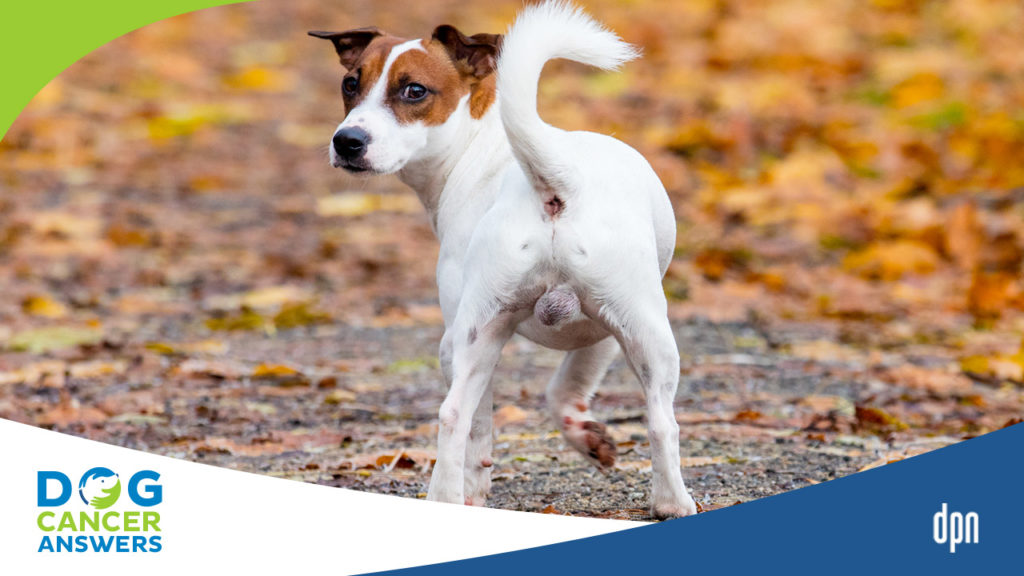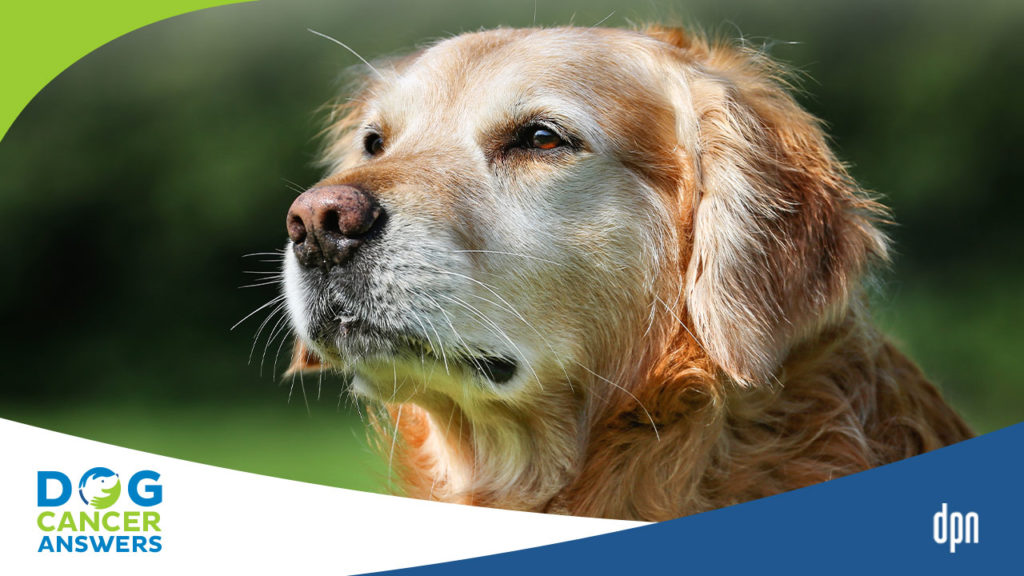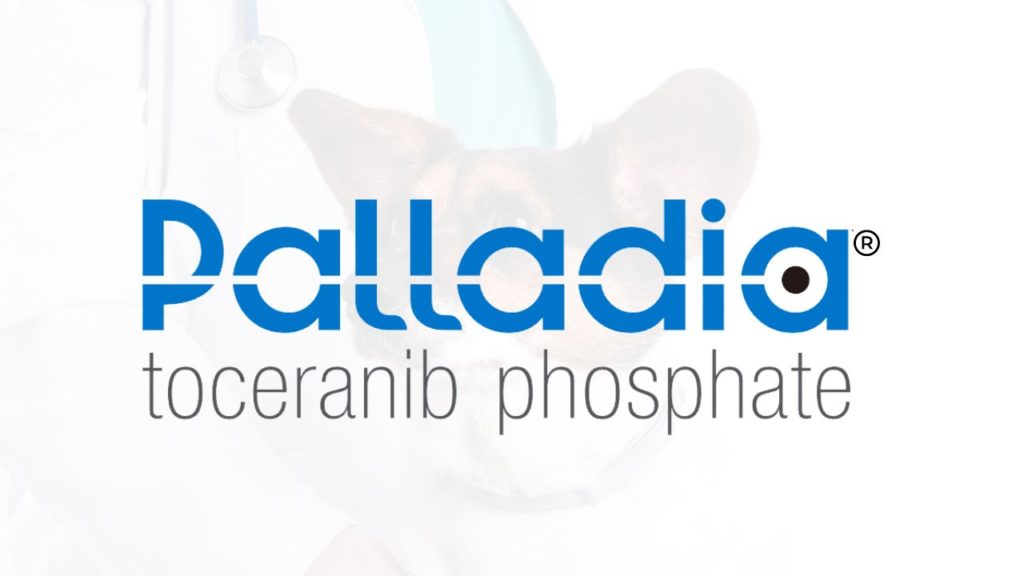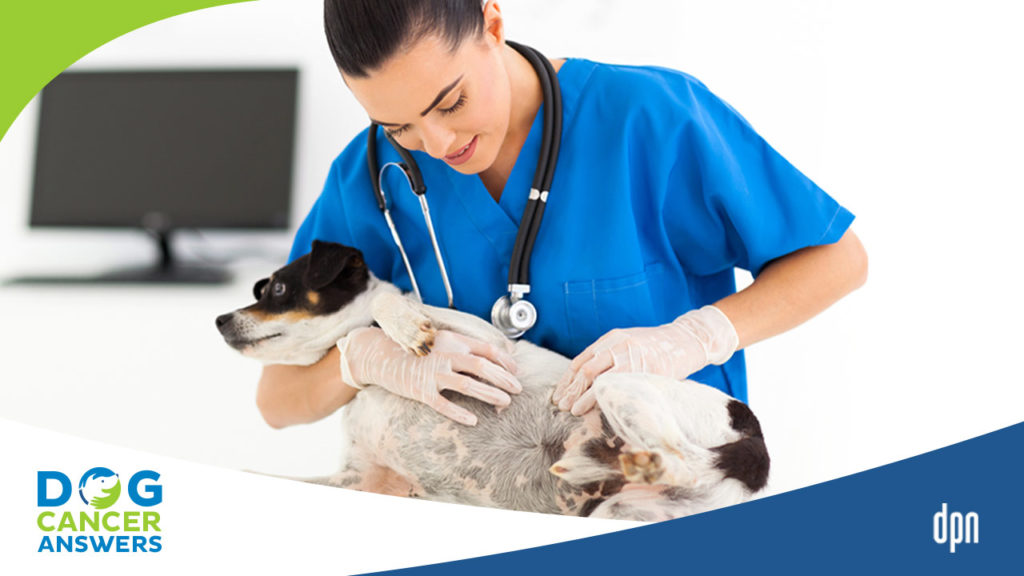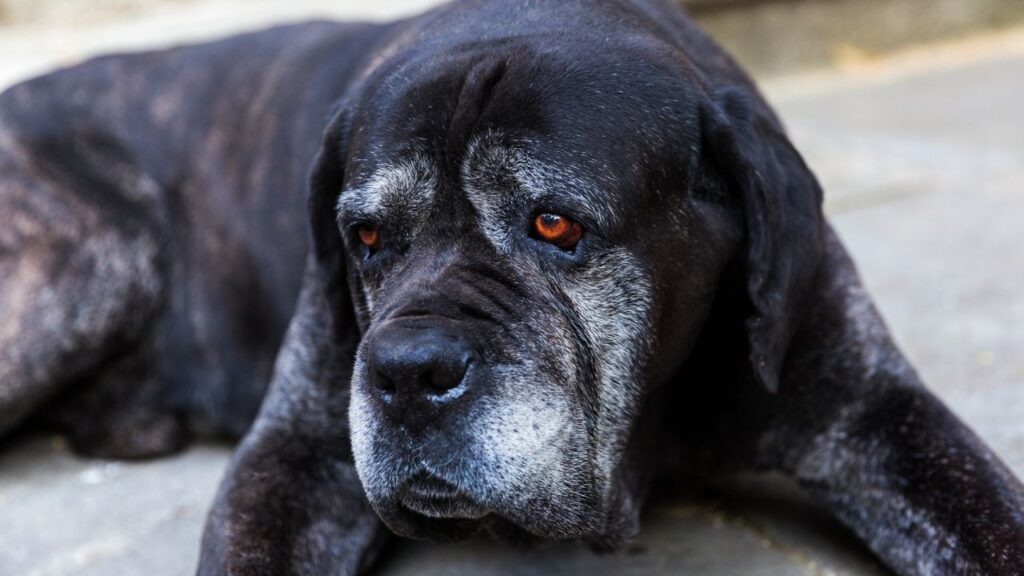Anal sac cancer in dogs can metastasize and be deadly, but a cure is possible for anal gland tumors with early, prompt, aggressive treatment.
Key Takeaways
- Left untreated, dogs with anal sac tumors like perianal adenocarcinoma live 12 to 18 months, although the prognosis varies widely depending upon the size of the tumor, whether blood calcium levels are high, and whether it has metastasized.
- When perianal tumors are small and easy to remove, there are usually no symptoms you’ll notice at home. These are usually found by your veterinarian during a rectal exam.
- When perianal gland tumors are larger, you may see swelling near the anus, straining to defecate or constipation, ribbon-like feces, blood in the stool, a bleeding anus, scooting, or your dog licking their rear end.
- Perianal glands are located under the skin on either side of the anus. While you may not see the tumor itself, you may notice swelling on one side of the anus.
- The key to getting rid of anal sac cancer in dogs is surgery, as soon as possible, because these tumors grow fast and metastasize.
- Anal gland tumors are not necessarily painful, but as they grow, they can cause straining to defecate and pain in the later stages.
Anal Sac Cancer in Dogs Has Many Names
Anal sac cancer in dogs may be called by many different names, but regardless, it occurs in one place: the anal sacs, also known as anal glands.
Anal Glands and How They Work
The anal glands nestle beside the anus in both male and female dogs. There is one sac on either side, just under the skin’s surface, with ducts that open just at the edge of the anus.
These two little pockets are lined with modified sweat glands called apocrine glands. These sweat glands make a fishy-smelling, brownish-grey, oily material. The glands hold this material until the dog defecates and the feces put pressure on the glands, which express the oil out to coat the feces as it leaves the body.
Though no one knows for sure, this anal sac material is likely for marking territory or other communication between dogs.
Where Anal Gland Tumors Occur
Commonly, tumors will arise from the apocrine cells that line these anal sacs. The tumor itself goes by many names:
- Anal sac cancer
- Apocrine gland adenocarcinoma of the anal sac
- Anal sac adenocarcinoma (AGA)
- Anal sac carcinoma
- Anal gland cancer
- Anal gland adenocarcinoma
- Anal gland carcinoma
- Anal gland anal sac adenocarcinoma (AGASACA)
All these very similar names refer to the same disease. Sometimes it is known by an acronym – such as AGA or AGASACA.
The prognosis for anal sac cancer is dire if left untreated, as this tumor tends to metastasize (spread to other locations).
Furthermore, surgical removal can be challenging due to the location of these anal sac tumors and the tendency to grow large rather quickly.
Early detection of anal sac tumors is essential.
Early detection is essential.
Stats and Facts About Anal and Perianal Cancer
The area around the anus is called the perianal area. Several tumor types can occur here (see below), but anal sac tumors are the most common tumor in this body part. They account for approximately 15% to 20% of tumors in this area.1
Anal sac tumors are usually only on one side. However, in 5% to 10% of cases, tumors grow in both anal sacs simultaneously.5,7
If caught early, the prognosis for anal sac cancer can be good, but moving quickly is very important.
Otherwise, anal sac cancer tends to be:
- Invasive, meaning likely to invade surrounding tissues. This is why surgery to remove the tumor and anal sac is always the first step in treatment. Because of the location in the perianal area, wide margins are often not feasible, so the smaller the tumor is, the better chances of getting it all out. If caught early, surgery alone is curative.1
- Metastatic, meaning likely to spread to other locations in the body. In 50% of anal sac cancer cases, the abdominal lymph nodes are enlarged at diagnosis.2 These lymph nodes are the most common site for anal sac cancer metastasis, so they are often removed at the same time as the primary mass. These cancers may also metastasize to the bone, liver, lungs, spleen, or sublumbar lymph nodes.3 Unfortunately, in 26% to 89% of dogs, metastasis is already present when anal sac cancer is diagnosed.
- Paraneoplastic, meaning likely to cause secondary effects on the body. Hypercalcemia, or elevated calcium in the blood, is the most common, found in 16% to 53% of cases.5 Sources disagree on how much hypercalcemia affects prognosis; either it has a negative impact, or there is no statistical difference.5 Some oncologists have found that hypercalcemia that goes away after surgery is usually a better sign than if it persists. Hypercalcemia can lead to kidney failure, which is sometimes irreversible.
There are a few other, less common types of tumors that can occur in the perianal area:
- Tumors of another type of perianal gland called hepatoid glands. These can be either benign or malignant.7
- Tumors of other skin cells in the perianal area, such as melanomas, mast cell tumors, or lymphoma.7
It is also possible to have benign tumors of the anal sacs, but these are extremely rare.7 They are called adenomas rather than adenocarcinomas.
The Causes of Anal Sac Cancer in Dogs
The exact cause of anal sac cancer is not well understood.3 Like many cancers, it is likely a complex and unknown mix of environmental and genetic factors.
Risk Factors for Anal Sac Cancer
Anal sac cancer occurs with equal frequency in male and female dogs,1 and there is likely no difference if they are spayed or neutered.7
The average age of diagnosis is ten years old,2 but dogs from 3 to 19 years old have been diagnosed with anal sac cancer.3
Sources do not agree on which breeds are more likely to have anal sac cancer. Breeds mentioned as potentially having increased risk include spaniel breeds2 such as English Cocker Spaniels, Cavalier King Charles Spaniels, or Springer Spaniels.3 Dachshunds and Shepherd breeds potentially have more risk, as well.7 But according to some researchers, there is no breed predilection.1
Dr. Nancy Reese talks about the challenges of surgery for anal sac cancer in elderly dogs in this episode of DOG CANCER ANSWERS.
Symptoms You Might See in Your Dog When They Have Anal Tumors
Unfortunately, often no symptoms are seen at home when the tumor is in the early stages and very small. The family veterinarian usually finds small tumors incidentally (without specifically looking for them) on rectal palpation at a routine appointment. An estimated 39% of cases are found this way.3
If tumors are larger, however, you may notice symptoms at home. Larger tumors can cause problems, such as:
- Swelling near the anus
- Constipation or straining to defecate
- Narrow, ribbon-like feces
- Blood in the stool or coming from the anus
- Scooting or licking the rear end
Hypercalcemia, Elevated Blood Calcium Levels
This type of cancer tends to cause elevated calcium in the blood (hypercalcemia), which may or may not aid in diagnosis.
- Many dogs have no symptoms, but hypercalcemia can be found on routine bloodwork.3
- Other dogs that are hypercalcemic may have increased thirst and urination (PU/PD), often the first thing pet parents will notice.
- Hypercalcemia can eventually lead to kidney failure. Symptoms of kidney failure include increased drinking and urination, vomiting and/or loss of appetite, lethargy, and muscle weakness.2
If any of these symptoms are seen at home, the dog should go to the veterinarian for diagnostics, as there are many potential reasons for these symptoms aside from anal sac cancer.
Diagnosing Anal Sac Cancer in Dogs
Most anal sac tumors are found by the family veterinarian, either by feeling a nodule during a rectal exam or by finding high calcium on blood work. Either of these findings can raise suspicion of anal sac cancer and lead to further diagnostics.
Laboratory Tests
Your veterinarian will likely want to run some more laboratory tests. If it had not been done already, the likely next step is the complete blood count, blood chemistry, and urinalysis. With these tests, your veterinarian looks at your dog’s health status in general and for any complicating disease factors, especially kidney function or high blood calcium. Approximately 30% of dogs with anal sac cancer also have hypercalcemia.1
Fine Needle Aspirate
Your veterinarian may try to get a fine needle aspirate (FNA) of the anal sac nodule. This is when he or she uses a needle to remove cells from the mass, then looks at them under a microscope in a cytology test.
Sometimes it is impossible to safely get a diagnostic sample of the nodule if the mass is too deep, too small, or your dog is too wiggly.
Your veterinarian can send the sample to a veterinary pathologist for a second opinion. This provides your oncologist with invaluable information about your dog’s cancer.
Biopsy or Excisional Biopsy
If getting an FNA is impossible, the next best option may be to surgically remove the mass and send it to a veterinary pathologist for identification. This is called a biopsy if part of the mass is removed, or an excisional biopsy if the entire mass is removed.
Samples sent to the lab often take 3 to 10 days for results.
Surgical removal is the mainstay of treatment, and the tumor should be sent to a laboratory for identification, whether the mass was entirely removed or only biopsied.
Other Diagnostic Tests for Staging Purposes
Other common diagnostics include imaging, such as X-rays or ultrasounds, for staging purposes. This may happen at your regular veterinarian or the veterinary oncologist, depending on your situation.
Prognosis and Staging Anal Gland Tumors in Dogs
Staging is the process of determining if the primary tumor has spread and to where. These two factors can greatly affect your dog’s prognosis (likely outcome).
Staging can get quite expensive, so this is an area where you can weigh the pros and cons.
- The pros of staging are that you and your dog’s veterinary team will have a complete picture of your dog’s health and what parts of his body are affected by cancer. This information can give you a more accurate idea of how he might do and might also rule in or out some treatment options.
- The cons are that costs add up, and it does not always give information that will change what you decide to do.
Recommended Staging Tests for Anal Sac Cancer
For anal sac cancer, it may help you with decision-making to at least determine if it has spread to the lymph nodes, lungs, or other organs.
Several kinds of imaging can be used for staging:
- X-rays of the chest and/or abdomen, looking for metastasis and/or enlarged lymph nodes
- Abdominal ultrasound may be more accurate if available1
- Specialists often recommend CT (computed tomography), which can aid in surgical planning
Prognosis and Median Survival Times for Anal Sac Cancer
The overall survival time for anal sac cancer is approximately 12 to 18 months, but it varies widely3 based on the following factors:
- Size of tumor at the time of diagnosis.
- Greater than 10 centimeters has a bad prognosis.1 In one study, dogs with tumors less than 10 centimeters survived a median of 584 days, while dogs with tumors bigger than 10 centimeters survived a median of 292 days.6
- Dogs with tumors over 2.5 centimeters are more likely to have the tumor spread to another part of the body (metastasize).5
- Hypercalcemia at the time of diagnosis.1 It is generally accepted that hypercalcemia is associated with a worse prognosis, though there is a disagreement between specialists on just how much.5
- Presence of metastasis. The prognosis is worse if the tumor has already spread to another location in the body. The prognosis is especially poor if the tumor has spread to the lungs.1 In one study, dogs with anal sac cancer metastasis to the lungs survived a median of 219 days, while those without metastasis to the lungs survived a median of 548 days.6 That said, a study did find that removing abnormal lymph nodes at the time of surgery to remove the tumor kind of “reset the clock” and made for longer survival times. 11
- Ability to surgically remove the primary tumor. The prognosis is much better if surgery is possible and the tumor can be removed entirely.2
- The median survival time after complete surgical excision is 906 days versus 386 days without.5
- In cases without signs of metastasis, the median survival times are even better. The median survival time after surgical excision, but without signs of metastasis, was 1,237 days (almost 3.5 years).5
Dr. Brooke Britton discusses anal gland tumors spreading internally in this episode of DOG CANCER ANSWERS.
Treatments for Anal Gland Tumors
Treating cancer in dogs is not usually about getting a “cure.” Instead, the focus is on improving and maintaining the quality of life while hopefully extending the dog’s life beyond what would happen if the cancer wasn’t treated.
That said, in the case of anal sac cancer, good outcomes and even a “cure” is possible, but only with VERY early and aggressive treatment.1
Combination therapy (surgery, chemotherapy, and radiation) is most often recommended. One study found that dogs treated with surgery, radiation, and chemotherapy had an overall survival rate of over 900 days.1
Surgery for Anal Sac Tumors
Surgical excision of the primary tumor is considered the most important part of treatment. If done early, it can be curative. The tumor must be sent to a veterinary pathologist to identify the type and confirm all the tumor cells were removed.
There are potential surgical complications in the delicate anal area:
- Depending on the size of the tumor, some parts of the nearby tissue may also need to be removed.
- Anal sac cancer often invades the anal sphincter, which is the muscle that controls the passage of fecal matter. Partial removal of this muscle can cause fecal incontinence, or the leaking of feces, which happens in 33% of dogs with anal sac cancer.3
- Infection is fairly common due to fecal contamination.
Anal sac cancers in dogs may recur, or grow back, after surgery. If there are “dirty margins” (some tumor cells were left behind) noted on the pathology report, 29% to 45% of dogs will have the tumor grow back.3
Your veterinarian may see enlarged lymph nodes near the anal sac tumor. If those regional lymph nodes are enlarged, they should be surgically removed at the same time as the primary tumor (usually through a separate abdominal incision).4 This may help to limit metastasis.
Chemotherapy as an Adjunct Treatment for Anal Sac Tumors
Chemotherapy alone has not been proven effective in treating anal sac cancer, but it is often added to treatment protocols, especially if local lymph nodes are affected.5 Dogs most likely to benefit from chemotherapy include:
- High-grade cancer (in which case, chemo is started after surgery)
- Surgery with incomplete margins
- Cancer that has returned after previous treatment
- Metastasis that can’t be removed surgically
Various chemotherapy drugs have been recommended, with mixed results: doxorubicin, carboplatin, mitoxantrone, melphalan, and gemcitabine.1 Some studies suggest the medication Palladia may be helpful.4
One study suggests melphalan combined with surgery may be helpful in dogs with anal gland cancer, where the tumor has spread to the regional lymph nodes.8 This study is not very recent, but ask your oncologist if any new protocols have come from this.
Radiation to Treat Anal Gland Tumors
Due to the invasive and aggressive nature of anal sac cancer, radiation is a very helpful tool.
Radiation to Clean Up After Surgery
Radiation has proven to be a helpful treatment in many cases, especially when done after surgery. Any tumor cells left behind can often be “cleaned up” by radiation,4 and involved lymph nodes can be irradiated, greatly increasing positive outcomes.1
One study compared dogs with anal sac cancer who had surgery versus those with radiation therapy on their tumor. The survival and symptom-free time in the radiation-treated dogs was nearly twice as long as those with just surgery. Both surgery and radiation led to quick relief of symptoms.9
Radiation When Surgery Isn’t an Option
Some dogs have tumors that are not resectable, meaning they cannot be surgically removed. Either they are too large, or they have some other complication that prevents surgery from being an option. Radiation can be very helpful in these cases.
Although not a cure, radiation can make the disease less severe, reduce pain and inflammation, and improve quality of life.1
Immunotherapy
At this time, there are no known immunotherapies used in dogs for anal sac cancer, though some immunotherapies used in humans show potential for use in dogs.10 New treatment options may be available soon; we will update this article as they become available.
Vaccine
Currently, no known vaccines are used in dogs for this cancer type.
Diet for Dogs with Anal Gland Tumors
Generally, a high-fiber diet is good for anal sac health, but depending upon the case, a diet high in fiber may or may not be recommended for dogs with anal sac cancer.
There are many good sources of fiber:
- Canned pumpkin (be sure no xylitol has been added)
- Psyllium husk (such as Metamucil, add ½ tsp per meal for small dogs, 2 tsp per meal for large dogs)
- All-bran cereal (however, NOT Raisin Bran, as raisins are toxic for dogs)
- Any number of commercial fiber supplements, such as Glandex
So, when should you not give fiber? Fiber can “bulk up” the feces, so do not supplement extra fiber if your dog has difficulty defecating due to enlarged lymph nodes or tumor size.
Plenty of free choice water is always required, especially if your dog is on a fiber supplement.
Otherwise, the most important thing for a dog with anal sac cancer is that her diet is complete and balanced. This can be achieved with a commercial diet, or by making a home-cooked diet from a recipe by a board-certified veterinary nutritionist.
Supplements for Dogs with Anal Tumors
Supplements that may benefit a patient with anal sac cancer include anything that aids in comfortable digestion and decreased inflammation. Look for probiotics, such as Fortiflora (by Purina) or Proviable (by Nutramax), and omega-3 fatty acid supplements containing EPH and DHA1 (such as Welactin).
You may find other supplements to consider with your veterinarian, as well. Always consult your veterinarian before adding a supplement to ensure that it is a good fit for your dog and won’t interfere with any of her medications or treatments.
Integrative Therapies
As with treatment for any cancer, an integrative approach is recommended. In addition to a healthy diet and supportive supplements, other treatments such as massage, acupuncture, and touch therapies may help control pain and maintain quality of life.
Remember to always consult a veterinarian before trying a new supplement or treatment.
What the End Looks Like for Dogs with Anal Sac Cancer
Anal sac cancer is aggressive and metastasizes quickly, so as dogs approach the end of days, death is often by humane euthanasia. There are a few situations where humane euthanasia may be the kindest option:
- When the dog can no longer defecate comfortably
- When the tumor spreads to the lungs, and he cannot breathe
- When the tumor spreads to internal organs, and it affects the function of the GI tract
- The dog is losing weight, or the dog won’t eat
- When the dog is feeling pain from primary or metastatic tumors
If you are worried about your dog’s life quality, having an open conversation with your veterinarian about hospice care is a good idea. It’s not giving up on your dog; it’s prioritizing quality of life. It’s never too early or late to have this conversation. If you are considering the end of life, ask your veterinarian what they think.
Prevention Strategies for Anal Sac Cancer in Dogs
If there is a specific single cause for anal sac cancer, we don’t know what it is at this time. Without knowing that, there is no known prevention, either. Your best bet is early detection.
Take your dog to the family veterinarian at least once a year (every six months for senior dogs) for a thorough exam and routine diagnostics (including blood work). A rectal exam may not be part of every routine exam, so ask your veterinarian very nicely to please perform a rectal exam, especially if your dog has a history of anal sac problems.
Dr. Demian Dressler explains why regular check ups with rectal exams are so important for dogs in this episode of DOG CANCER ANSWERS.
- Mehler, S.J. and Clifford, C.A. (2019) Anal sac anal gland adenocarcinoma — how combination therapy impacts outcome, IVC Journal. Innovative Veterinary Care. Available at: https://ivcjournal.com/anal-sac-anal-gland-adenocarcinoma/#:~:text=Tumors%20of%20the%20anal%20sac%20are%20uncommon%20and,for%2015%25%20to%2020%25%20of%20all%20perianal%20tumors. (Accessed: December 11, 2022).
- Small animal topics (no date) ACVS (American College of Veterinary Surgeons). Available at: https://www.acvs.org/small-animal/anal-sac-tumors (Accessed: December 11, 2022).
- Olsen, A. (2020) Anal sac adenocarcinoma – dallas veterinary surgical center, DVSC. Available at: https://dvsc.com/medical_library/anal-sac-adenocarcinoma/ (Accessed: December 11, 2022).
- Anal gland adenocarcinoma (no date) Animal Cancer and Imaging Center. Available at: http://www.veterinarycancer.com/anal-gland-adenocarcinoma (Accessed: December 11, 2022).
- Morello, E.M. et al. (2021) “Prognostic value of ki67 and other clinical and histopathological factors in canine apocrine gland anal sac adenocarcinoma,” Animals, 11(6), p. 1649. Available at: https://doi.org/10.3390/ani11061649.
- Williams, L.E. et al. (2003) “Carcinoma of the apocrine glands of the anal sac in dogs: 113 cases (1985–1995),” Journal of the American Veterinary Medical Association, 223(6), pp. 825–831. Available at: https://doi.org/10.2460/javma.2003.223.825.
- Kessler, M. (2014) Perianal tumors – WSAVA 2014 Congress – Vin, Powered By VIN. The World Small Animal Veterinary Association World Congress Proceedings, 2014. Available at: https://www.vin.com/apputil/content/defaultadv1.aspx?pId=12886&id=7054772 (Accessed: December 11, 2022).
- EMMS, S.G. (2005) “Anal sac tumours of the dog and their response to cytoreductive surgery and chemotherapy,” Australian Veterinary Journal, 83(6), pp. 340–343. Available at: https://doi.org/10.1111/j.1751-0813.2005.tb15626.x.
- Meier, V. et al. (2016) “Outcome in dogs with advanced (stage 3b) anal sac gland carcinoma treated with surgery or hypofractionated radiation therapy,” Veterinary and Comparative Oncology, 15(3), pp. 1073–1086. Available at: https://doi.org/10.1111/vco.12248.
- Klingemann, H. (2018) “Immunotherapy for dogs: Running behind humans,” Frontiers in Immunology, 9. Available at: https://doi.org/10.3389/fimmu.2018.00133.
- EMMS S. Anal sac tumours of the dog and their response to cytoreductive surgery and chemotherapy. Australian Veterinary Journal. 2008;83(6):340-343. doi:10.1111/j.1751-0813.2005.tb15626.x
Topics
Did You Find This Helpful? Share It with Your Pack!
Use the buttons to share what you learned on social media, download a PDF, print this out, or email it to your veterinarian.
